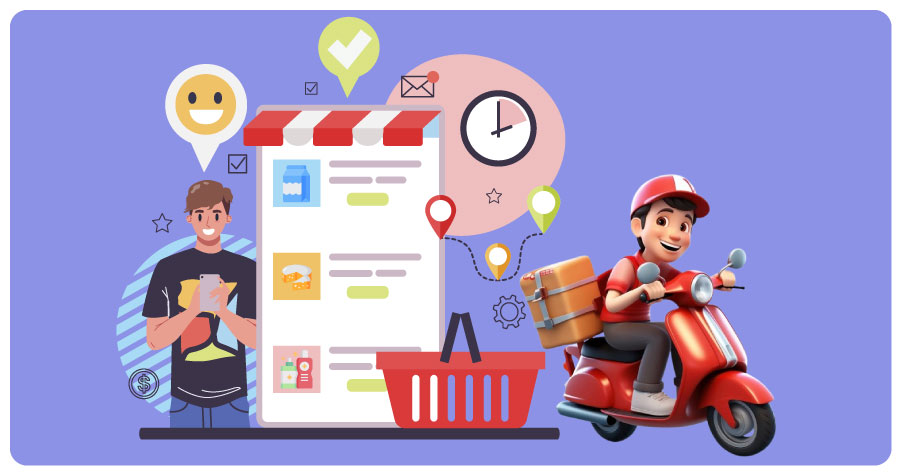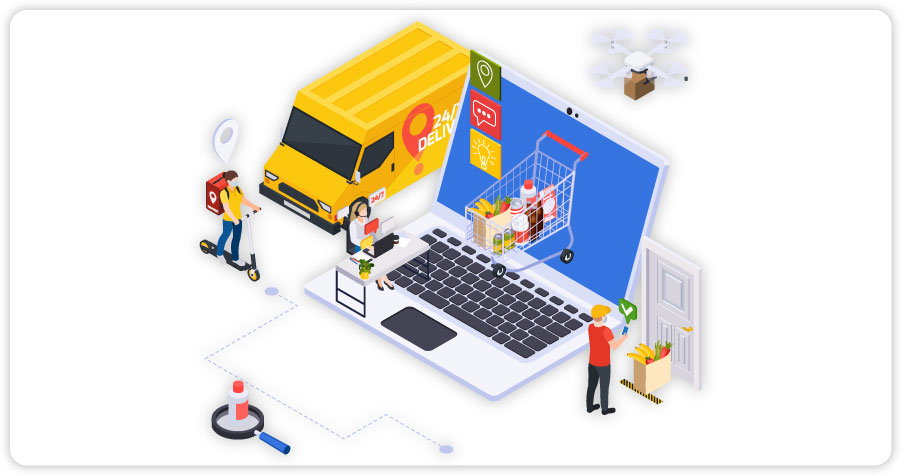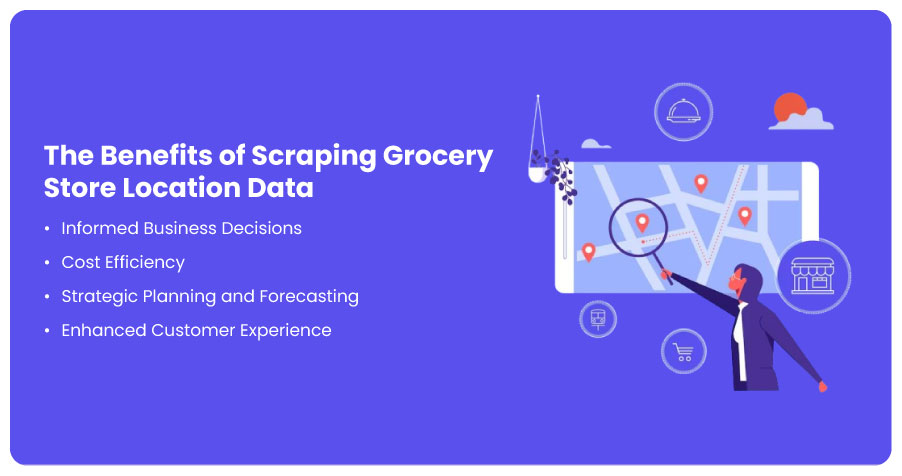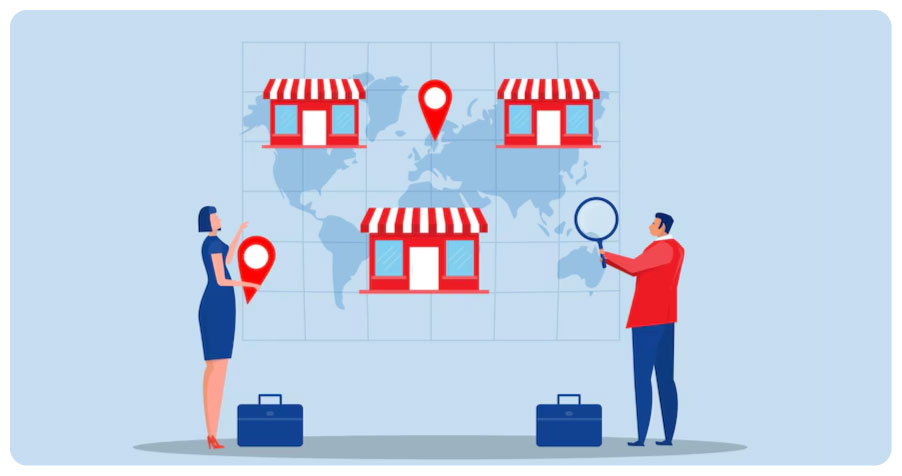Introduction
In today's competitive retail landscape, companies constantly search for new ways to stay one step ahead and extend their presence. One such potent tool for doing that is through the use of location insights from leading grocery stores. Scrape grocery store location data to get valuable information, which assists in optimizing operations, uncovering growth opportunities, and improving customer targeting. Companies can make informed decisions that improve marketing and distribution strategies through Top Grocery Store Location Datasets. This process helps organizations identify lucrative areas to expand, analyze competitors' visibility, and determine underserved locations. Also, Top Supermarket Store Location Data Scraping facilitates efficient inventory management, supply chain enhancement, and timely decision-making. As retailing evolves, having the capability to scrape and analyze grocery store location data positions companies with a distinct competitive edge to increase profitability and the size of their customer base.
Understanding Grocery Store Location Data

Location data refers to the geographical information related to specific points of interest—such as the physical locations of grocery stores. This can include the exact address, geographical coordinates (latitude and longitude), store types, size, and even the characteristics of the surrounding area. For grocery chains, understanding the distribution of their stores is vital for operational and marketing strategies. By scraping grocery store location data, businesses can access real-time, accurate, and up-to-date information about where top grocery stores are located, how far apart they are from each other, and how they compare in terms of customer footfall, service offerings, and competitive positioning. This data can be gathered through web scraping techniques, which enable businesses to extract structured and unstructured data from various sources such as grocery websites, online maps, and even third-party databases. When this data is analyzed, it unlocks a wealth of insights that can guide critical business decisions. For instance, Grocery Chain Location Datasets provide detailed information for mapping strategic store locations. Web Scraping Grocery Chain Location Data allows continuous monitoring of changes and identifying new trends. With Top Supermarket Location Data Scraping Services, businesses can improve market entry strategies and optimize their store network.
Applications of Scraping Grocery Store Location Data

Scraping grocery store location data unlocks a range of powerful applications for businesses aiming to expand, compete, and thrive in the retail sector. From identifying high-potential markets to optimizing logistics and targeting customers more effectively, location data offers actionable insights that drive more intelligent decisions. This data becomes critical in strategic planning, marketing, and operational efficiency.
- Market Expansion and Location Optimization: Scrape Best Grocery Store Location Data for businesses planning market expansion is crucial for identifying the most profitable areas. Companies can analyze store density in various regions and determine where there's a gap in the market or areas with high demand but low supply. This analysis helps businesses pinpoint optimal locations for new stores, ensuring that resources are invested wisely. For instance, a business in the food industry looking to open a new outlet or service point can Extract the Best Grocery Store Location Data to analyze existing grocery store locations. By studying the existing competitors in the area, they can identify underserved locations, ensuring their new store attracts the highest potential customer base. This type of data-driven decision-making reduces over-saturation risk and helps businesses avoid wasting resources.
- Competitor Analysis: Scraping location data from competitors can help businesses stay ahead of the game. By gathering data on where top grocery chains like Walmart, Kroger, or Tesco have set up shop, businesses can evaluate their competitors' positioning and make strategic moves accordingly. For example, if a competitor is heavily concentrated in one city, a new player may target nearby cities or rural areas where competition is less intense. By analyzing competitors' store locations through Grocery App Data Scraping Services , businesses can assess how they spread across regions and identify gaps in their geographic coverage. This offers insights into their expansion strategy, product offerings, or the areas they might neglect. A business with such information can optimize its growth plans and position itself more effectively in the market.
- Customer Segmentation and Targeting: Understanding grocery stores' locations allows businesses to segment and target customers more effectively. For example, suppose a company is launching a new product. In that case, it can use location data to determine where its target audience resides, tailoring marketing and promotional strategies to those specific areas. By understanding the proximity of grocery stores to customers, businesses can offer localized promotions, making them more relevant and engaging. For instance, a brand looking to market organic produce can focus on areas with high-income populations or health-conscious consumers. Businesses can optimize their marketing campaigns by analyzing where top grocery stores are located and which areas have a high volume of customers interested in such products, improving ROI and customer satisfaction through Web Scraping Quick Commerce Data .
- Supply Chain and Inventory Management: Location data is vital in optimizing supply chains. By scraping grocery store location data, businesses can understand the geographical distribution of grocery stores and use this information to enhance logistics operations. For example, grocery chains often rely on strategically placed warehouses to serve their stores. Knowing the location of top grocery stores allows businesses to optimize their distribution networks and reduce delivery times, lowering operational costs. Location data can help optimize product placement and distribution strategies for companies that sell their products through grocery stores. Understanding which stores are most likely to sell certain products based on location and demographics allows businesses to tailor inventory management and stock levels to meet real-time demand.
The Benefits of Scraping Grocery Store Location Data

Scraping grocery store location data offers businesses valuable insights into market trends, customer behavior, and competitive landscapes. By accessing accurate, real-time data, companies can enhance decision-making, improve logistics, and strategically expand their presence in high-demand areas.
- Informed Business Decisions: One of the most significant benefits of scraping grocery store location data is the ability to make informed business decisions. Whether determining the best places to open a new store or refining marketing strategies, having access to reliable, up-to-date location data empowers businesses to act confidently. Companies can forecast trends, identify opportunities, and mitigate risks by analyzing this data.
- Cost Efficiency: Scraping location data reduces the cost of traditional market research and enables businesses to access real-time information without the need for expensive surveys or fieldwork. Web scraping automates data collection, ensuring businesses can access the most relevant information quickly and cost-effectively.
- Strategic Planning and Forecasting: Location data enables better strategic planning and forecasting. Businesses can better plan their future growth by understanding how grocery stores are distributed geographically. Whether deciding where to open a new store or adjusting product availability based on regional trends, location data provides the groundwork for well-thought-out strategies.
- Enhanced Customer Experience: Convenience heavily influences customer satisfaction. By understanding the proximity of grocery stores to potential customers, businesses can tailor their offerings to meet the specific needs of different regions. For example, a grocery chain could introduce location-based promotions to attract customers who live near certain stores, making the shopping experience more relevant to them.
Unlock the power of precise location insights—start scraping grocery store location data with our expert solutions today!
Challenges in Scraping Grocery Store Location Data

While scraping grocery store location data offers many benefits, it comes with its own challenges. One of the primary challenges is ensuring data accuracy. If the data collected is outdated or incorrect, it could lead to costly business decisions. This can significantly affect Grocery Pricing Data Intelligence , where accuracy is essential for reliable pricing strategies and competitive positioning.
Furthermore, scraping large amounts of data from various sources may require significant technical expertise and resources. Another challenge is managing and analyzing the data. Raw location data alone isn't enough to drive business decisions. Companies need the tools and expertise to process this data and generate meaningful insights. Without proper analysis, businesses may struggle to extract value from the Grocery Store Datasets they collect . Lastly, there are legal and ethical considerations surrounding web scraping. Scraping data from websites without permission could result in legal repercussions, especially if the data is protected by copyright. Companies should comply with all relevant laws and regulations when scraping data.
How Food Data Scrape Can Help You?
- Custom Location Dataset Development: We build tailored Grocery Store Datasets based on your specific requirements—by region, brand, or store type—providing highly targeted and structured data ideal for analysis.
- Real-Time Data Updates: Our tools are designed to Scrape Top Grocery Store Location Data in real-time or at regular intervals, ensuring you always work with the most up-to-date store information.
- Data Integration & API Access: We offer integration-ready solutions and Grocery Delivery Scraping API Services so your systems can automatically pull clean and structured store location data into CRMs, BI tools, or logistics platforms.
- Geo-Intelligence & Mapping Insights: Top Supermarket Store Location Data Scraping enriches raw location data with demographics, footfall estimates, and neighborhood analytics to support smarter decision-making.
- Compliance & Ethical Scraping: We prioritize ethical sourcing practices and legal compliance, ensuring all scraped data respects site terms, privacy laws, and copyright protections.
Conclusion
Scraping grocery store location data is a powerful tool that can significantly impact a business's strategic decisions, customer targeting, and market expansion efforts. With access to real-time, accurate data, businesses can optimize their operations, stay ahead of competitors, and make informed decisions that drive growth and profitability. Utilizing Grocery Delivery Scraping API Services enhances the ability to gather this crucial information efficiently. Understanding their locations cannot be overstated, as grocery stores play a vital role in local and global economies. Whether it's optimizing supply chains, improving customer experiences, or making smarter investment decisions, scraping grocery store location data provides the critical insights needed to succeed in today's competitive marketplace. Tools like a Grocery Price Dashboard can further enrich this data with pricing trends, while a Grocery Price Tracking Dashboard allows for real-time monitoring of market shifts. By leveraging this data, businesses can unlock new opportunities, optimize their strategies, and ultimately thrive in the evolving retail industry.
Are you in need of high-class scraping services? Food Data Scrape should be your first point of call. We are undoubtedly the best in Food Data Aggregator and Mobile Grocery App Scraping service and we render impeccable data insights and analytics for strategic decision-making. With a legacy of excellence as our backbone, we help companies become data-driven, fueling their development. Please take advantage of our tailored solutions that will add value to your business. Contact us today to unlock the value of your data.
























































































